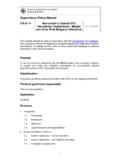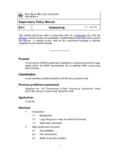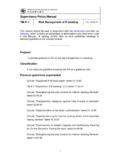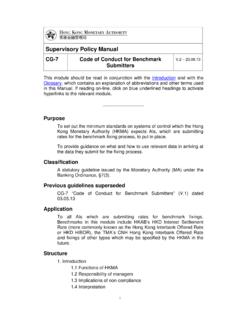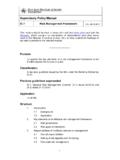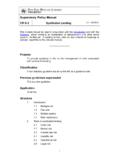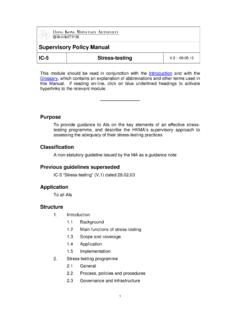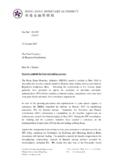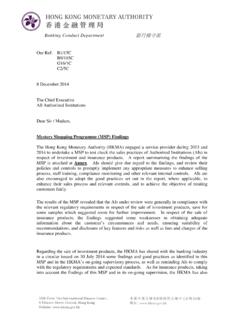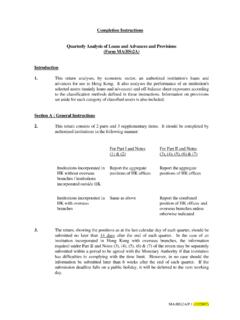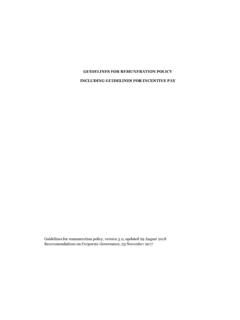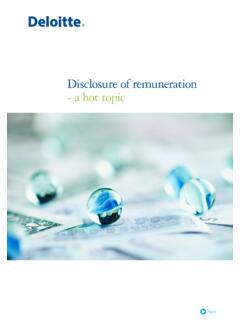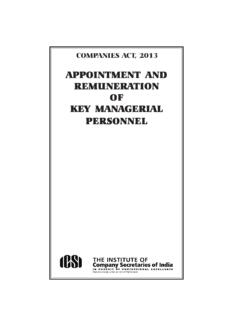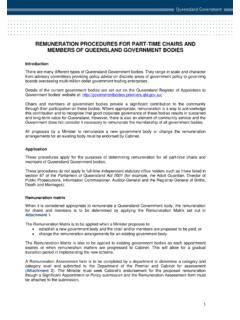Transcription of Supervisory Policy Manual - Hong Kong dollar
1 Supervisory Policy Manual CG-5 Guideline on a Sound remuneration System 1 This module should be read in conjunction with the Introduction and with the Glossary, which contains an explanation of abbreviations and other terms used in this Manual . If reading on line, click on blue underlined headings to activate hyperlinks to the relevant module. Purpose To provide guidance to AIs on the key elements of a sound remuneration system, to set out the approach which the HKMA will adopt in the supervision of AIs remuneration systems, and to outline the level and type of disclosure in relation to remuneration expected to be made by AIs Classification A non-statutory guideline issued by the MA as a guidance note Previous guidelines superseded CG-5 Guideline on a Sound remuneration System ( ) dated ; ( ) dated Application To all AIs Structure 1.
2 Introduction Objectives Application Supervisory approach 2. Elements of a sound remuneration system Governance Structure of remuneration Measurement of performance for variable remuneration Alignment of remuneration payouts to the time horizon of risks Supervisory Policy Manual CG-5 Guideline on a Sound remuneration System 2 3. remuneration disclosure Importance of disclosure Frequency and method of disclosure Supervisory Policy Manual CG-5 Guideline on a Sound remuneration System 3 1. Introduction Objectives The main objective of this module is to ensure that AIs remuneration systems are consistent with and promote effective risk management, and contribute toward acceptable staff behaviour. remuneration systems which create incentives towards inappropriate and excessive risk-taking could threaten the safety and soundness of the individual AI concerned and potentially thereby the stability of the local banking system.
3 This module sets out the HKMA s Supervisory expectations with regard to remuneration practices of AIs. It is recognised that, so far as remuneration systems are concerned, one size will not fit all AIs. The HKMA s intention is therefore not to prescribe a particular remuneration system, or levels of, or limits on, individual remuneration . The development of remuneration systems and the setting of such levels and limits are and remain the responsibility of AIs Boards of Directors (Boards)1 and senior management. This module focuses rather on the governance and control arrangements for, and operation of, AIs remuneration systems in the context of the incentives for risk-taking they may create. AIs are expected to establish and operate their remuneration policies, structures and incentives awards with due regard to the principles set out in this module.
4 Application To meet the objectives above and ensure a level playing field within the local banking sector, this module applies to all Where, because of local laws or regulations in any relevant overseas jurisdiction, an overseas branch or subsidiary is unable substantively 1 In this module, the term Board is used to mean the Board of Directors of a locally incorporated AI or the Board of Directors and/or local management of an overseas-incorporated AI where appropriate. 2 In the case of locally incorporated AIs, the scope covers their overseas branches and subsidiaries subject to the HKMA s consolidated supervision. Supervisory Policy Manual CG-5 Guideline on a Sound remuneration System 4 to reflect the principles set out in this module in its remuneration system, the HKMA should be The principles relating to sound remuneration systems set out in this module supplement the Supervisory Policy Manual module CG-1 Corporate Governance of Locally Incorporated Authorized Institutions.
5 This module should also be read in conjunction with any other applicable modules4 as well as guidance issued and updated by the HKMA from time to time. The sound practices contained therein are also applicable to a sound remuneration system. AIs are expected to demonstrate to the satisfaction of the HKMA that their remuneration systems (or, in the case of overseas-incorporated AIs, the remuneration systems applicable to officers and employees engaged in the conduct of their business and operations in Hong Kong) are sound and in compliance with the principles set out in this module. In any case where an AI s remuneration system does not reflect certain aspects of the principles set out in this module, the AI s Board should satisfy themselves and the HKMA that either: (a) the relevant aspects of the module are not reasonably applicable to their institution or to certain business units within their institution or to certain groups of their employees, as the case may be, or (b)
6 Their institution has adopted alternative control measures which are equally effective in ensuring that their remuneration systems do not provide incentives to take inappropriate or excessive risk and that the systems are subject to adequate oversight by the Similarly, the provisions in this module concerning the structure of remuneration , the measurement of long-term performance, and the arrangements for deferral of 3 In such circumstances, the AI may be requested to demonstrate to the HKMA s satisfaction that the remuneration systems actually operated in such branches or subsidiaries are consistent with local laws or regulations in the relevant jurisdiction, do not incentivise inappropriate or excessive risk-taking and promote effective risk management. 4 For example: IC-1, IC-2, CG-2, CG-3.
7 5 A general reference to prevailing market practices as an explanation for any deviation from this module will not be regarded as sufficient for this purpose. Supervisory Policy Manual CG-5 Guideline on a Sound remuneration System 5 variable remuneration may be applied in a manner commensurate with the seniority, responsibility, role and activities of the relevant employees. It may not be appropriate to apply measures such as these to junior-level employees who receive relatively insignificant amounts of variable remuneration , or to employees whose duties are of such a nature that they would not be capable of, or in a position to, materially impact the risk profile of the The taking of a longer-term perspective for the purposes of certain aspects of the operation of the remuneration system (including deferral arrangements) may also not be relevant for employees whose duties are such that the risks incurred by their activities will be fully reflected in current year performance.
8 AIs are encouraged to discuss with the HKMA any concerns they may have regarding the applicability of this module to given aspects of their remuneration systems in the light of their specific conditions. Supervisory approach The HKMA will take into account the potential risks that may arise from an AI s remuneration system7 as part of its risk-based Supervisory process, reviewing the institution s remuneration policies, practices and outcomes when assessing its overall risk environment. For this purpose, all information which the HKMA may require in order to enable it to undertake an assessment of: (a) the risks inherent in, or relating to, an AI s remuneration system; and (b) the extent to which an AI s remuneration system is broadly consistent with the principles set out in this module; should be made available to the HKMA upon request.
9 The results of the HKMA s Supervisory assessment will feed into the annual review of an AI s Supervisory CAMEL rating and, for locally incorporated AIs, will be 6 AIs should however remain alert to the effects of their incentive compensation arrangements on groups of employees, where each individual employee may not be in a position individually to impact the AI s risk profile materially but where their behaviour, collectively, in response to similar incentives created by remuneration schemes, could do so. 7 In the case of overseas-incorporated AIs, the remuneration systems applicable to officers and employees engaged in the conduct of their business and operations in Hong Kong. Supervisory Policy Manual CG-5 Guideline on a Sound remuneration System 6 taken into consideration in the determination of whether additional capital should be held by the AI to cover risks not covered, or not adequately covered, under the AI s existing minimum capital requirements.
10 The HKMA adopts a proportionate approach to assessing AIs in applying this module to the development and operation of their remuneration systems, based on the size, scope, nature, risk profile and complexity of their business and the extent to which they use incentives-based compensation If the HKMA s assessment indicates that an AI s remuneration system is inconsistent with the principles set out in this module or poses a risk to the safety and soundness of the AI, the HKMA will expect the AI to implement measures promptly to address and mitigate any risks identified in respect of its remuneration arrangements, such as reducing the potential risk inherent in given employees activities or changing its remuneration system to bring it into line with the principles in this module.
